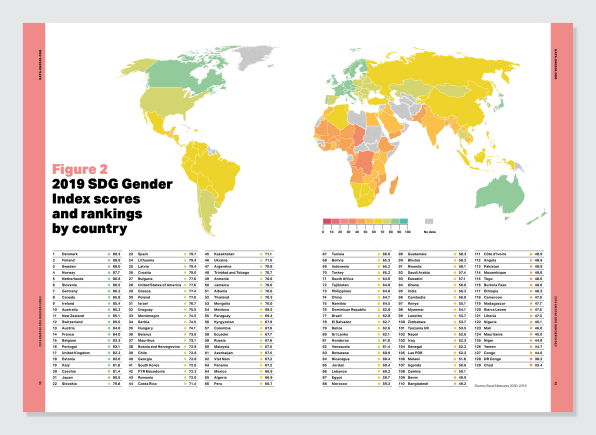These are the best–and worst–countries for gender equity
The 10 most fair countries for women to live are Denmark, Finland, Sweden, Norway, the Netherlands, Slovenia, Germany, Canada, Ireland, and Australia, according to a new report aimed at measuring the world’s progress toward gender equality. The worst are Sierra Leone, Liberia, Nigeria, Mali, Mauritania, Niger, Yemen, Congo, Democratic Republic of Congo, and Chad.
But let’s be clear: Everywhere still needs improvement. That’s the main takeaway from Equal Measures 2030, a global partnership of researchers and development experts that uses data to drive female empowerment toward the same-themed Sustainable Development Goal by 2030. To show that, the coalition created a 100-point gender index that ranks gender progress across all sustainable development efforts. This is meant to illustrate how crucial it is that gender equity co-evolves with progress across other categories. Curing hunger in the developing world is vital, but it’d be catastrophic if men in patriarchal societies controlled access to the new bounty. Same goes for access to clean water, better sanitation, education, and broader forms of economic empowerment, like personal banking and access to the internet.
The index accounts for these metrics in addition to tracking traditional gender equity benchmarks like rates of sexual violence, fair health policies, unpaid domestic labor, political representation, and pay gaps. All told, the average score among all countries was 65.7–that’s basically “poor” based on the report’s summary. Denmark, Finland, and Sweden weren’t perfect either, scoring only in the high 80s.

The top places for parity aren’t shy about funding strong public services and social assistance programs for everyone. Those where women remain especially oppressed are often dealing with extreme poverty, political instability, and regional conflicts that complicate progress there. Syria, Afghanistan, and the Central African Republic, for instance, were going through too much upheaval to even be measured.
“The overall finding is that the world is far from achieving gender equality, with 40% of the world’s girls and women–1.4 billion–living in countries that get a “very poor” failing grade on gender equality,” says Albert Motivans, the head of data and insights at Equal Measures 2030, in an email to Fast Company. (For reference, “very poor” is 59 or lower.)
The United States ranked 28th out of the 129 countries measured with a score of 77, in part because our country has fallen short on ways to help women in poverty and encourage fair participation in the workplace. “Some countries, including the United States, score much lower on the Index than we would expect, given the country’s economic resources,” Motivans adds.
The membership of Equal Measures 2030 includes the African Women’s Development and Communication Network, Asian-Pacific Resource and Research Centre for Women, Bill & Melinda Gates Foundation, and KPMG International, among others. This report works like a blueprint for leaders in places that are lagging to figure out where, and exactly how, they might change that.
“For example, social assistance programs can provide economic lifelines for women and are particularly critical for marginalized groups,” says Motivans. But despite its relative wealth, the U.S. hasn’t invested well enough in ways to lift up those in need. “In fact, Colombia has better coverage of social assistance among its poorest people than the United States,” he says. “The United States could be doing more to convert its wealth into well-being for women and girls.”
(15)



